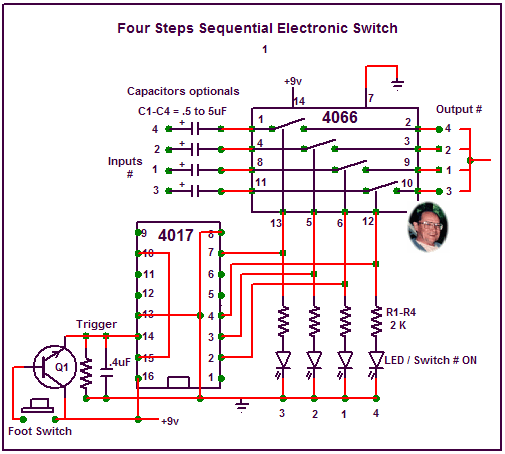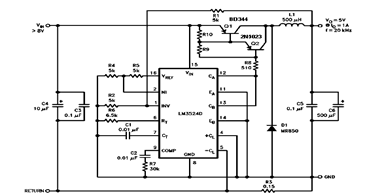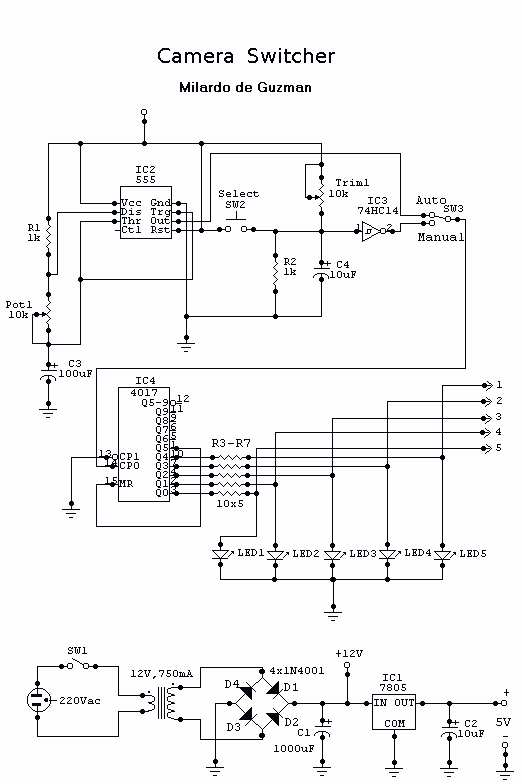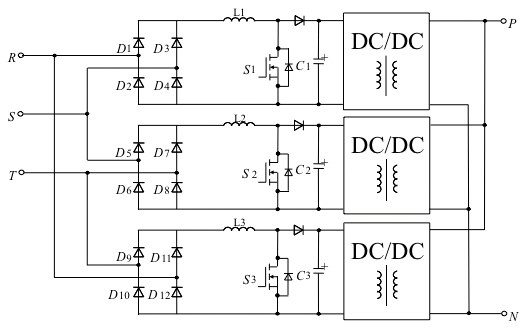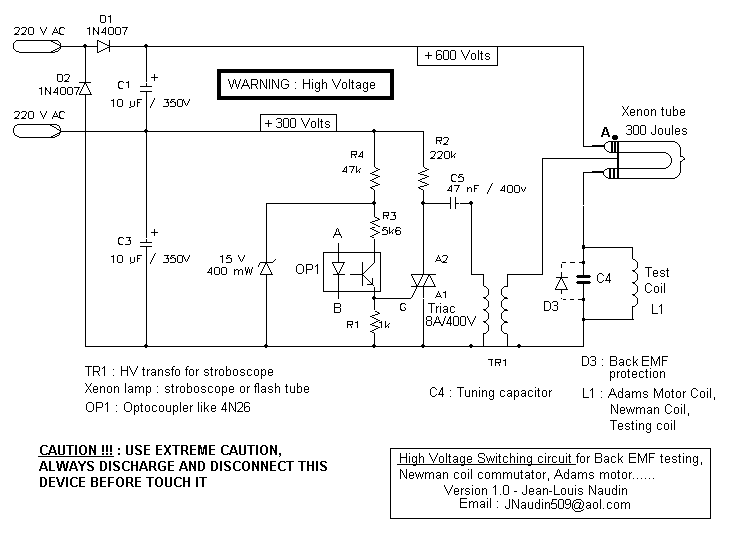
Switch Debouncer
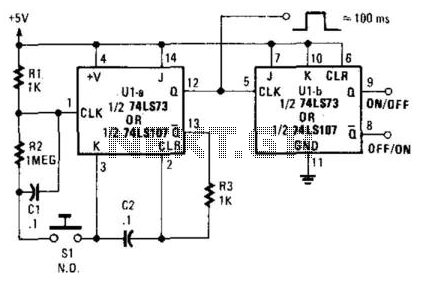
A 7473 JK flip-flop U1A is configured as a monostable multivibrator to drive U1B, functioning as a switch debouncer. The circuit features a self-clearing mechanism during power-up, providing a 100-ms pulse at pin 12 of U1A.
The circuit utilizes the 7473 JK flip-flop, a dual J-K flip-flop with preset and clear functions, to create a reliable switch debouncer. In this configuration, U1A is set up in monostable mode, which means it will output a single pulse in response to a triggering event. The output pulse duration is determined by external timing components, typically a resistor and capacitor connected to the timing pins of the flip-flop.
When the circuit is powered on, a self-clearing feature ensures that any previous states are reset, allowing for a clean start. This is particularly useful in applications where the switch may be bouncing during initial power-up. The 100-ms pulse generated at pin 12 of U1A serves as the output signal, which can be used to drive U1B or other subsequent circuitry.
The debouncing action helps eliminate false triggering caused by mechanical contact bounce in switches. As the switch is activated, the output pulse from U1A provides a stable signal to U1B, ensuring that only a single transition is registered, regardless of any rapid on-off cycling that may occur during the mechanical operation of the switch.
In summary, this circuit design effectively employs the 7473 JK flip-flop in a monostable configuration to create a robust switch debouncer, enhancing the stability and reliability of digital input signals in electronic systems. Using a 7473 JK flip-flop U1A connected as a monostable to drive U1B, as a switch debouncer. The circuit is self-clearing during power up. A 100-ms pulse is available at pin 12 U1A.
The circuit utilizes the 7473 JK flip-flop, a dual J-K flip-flop with preset and clear functions, to create a reliable switch debouncer. In this configuration, U1A is set up in monostable mode, which means it will output a single pulse in response to a triggering event. The output pulse duration is determined by external timing components, typically a resistor and capacitor connected to the timing pins of the flip-flop.
When the circuit is powered on, a self-clearing feature ensures that any previous states are reset, allowing for a clean start. This is particularly useful in applications where the switch may be bouncing during initial power-up. The 100-ms pulse generated at pin 12 of U1A serves as the output signal, which can be used to drive U1B or other subsequent circuitry.
The debouncing action helps eliminate false triggering caused by mechanical contact bounce in switches. As the switch is activated, the output pulse from U1A provides a stable signal to U1B, ensuring that only a single transition is registered, regardless of any rapid on-off cycling that may occur during the mechanical operation of the switch.
In summary, this circuit design effectively employs the 7473 JK flip-flop in a monostable configuration to create a robust switch debouncer, enhancing the stability and reliability of digital input signals in electronic systems. Using a 7473 JK flip-flop U1A connected as a monostable to drive U1B, as a switch debouncer. The circuit is self-clearing during power up. A 100-ms pulse is available at pin 12 U1A.
